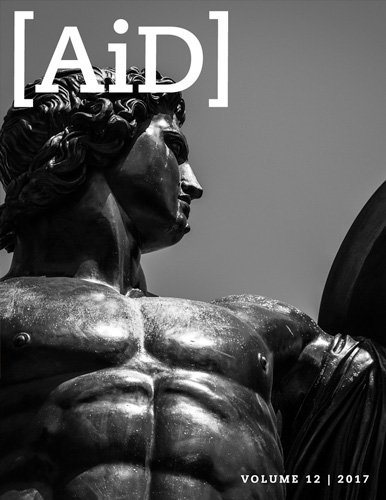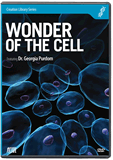
Preservation of Dinosaur Protein Fragments Flies in the Face of Evolution’s Millions-of-Years
News to Know
Abstract
Whether thighs or breasts, these meaty nuggets are not from chickens!
News Sources
- Smithsonian: “Meaty Finds: Two Studies Claim to Have Isolated Dinosaur Proteins”
- University of Toronto: “Good Ribbance: Dino Rib Bones Reveal Remnants of 195-million-year-old Protein”
- Science: “Scientists Retrieve 80-million-year-old Dinosaur Protein in ‘Milestone’ Paper”
- NC State News: “80-million-year-old Collagen Confirmed”
At-a-Glance
- Preserved protein fragments have been found in old dinosaur bones, again, confirming earlier findings.
- Collagen fragments in dinosaur bone are not bacterial contaminants.
- Collagen fragments in dinosaur bone have sequences resembling those in alligator and bird collagen.
- Observable science confirms that preserved collagen fragments in dinosaur bone are authentic, but does not demonstrate the protein can be preserved for millions of years or that dinosaurs evolved into birds.
When Jurassic Park hit the box office in 1993, the idea that dinosaur DNA—as in the movie—or proteins could still be available for study in the modern world seemed to be pure fantasy. And 12 years later, when Dr. Mary Schweitzer found red blood cells and blood vessels inside a fossilized dinosaur bone, much of the scientific community still found the idea preposterous. After all, how could fragile biological molecules or soft tissues be preserved for millions of years?
Mary Schweitzer published papers in 2007 and 2009 asserting that her team had isolated collagen from dinosaur bone. In the face of continuing skepticism, she and others have continued applying new technology to old bones, seeking to prove that that the proteins they have found are the real deal, not modern contaminants. The latest additions to this growing body of research came from two far-flung research centers, again asserting that dinosaur soft tissues and proteins have survived not only in fossilized material believed to be 80 million years old, but even in fossils dated 195 million years old.
Confirmation of Cretaceous Collagen
Collagen is the main structural protein found in skin and connective tissues. In Schweitzer’s North Carolina laboratory, Elena Schroeter and colleagues have now repeated Schweitzer’s 2009 study. They applied the latest technology to identify collagen protein sequences in the thigh bone of the Cretaceous hadrosaur, Brachylophosaurus Canadensis. Collagen from this Montana-area duck-billed dinosaur was the focus of the previous discovery.
The scientific method demands that discoveries be observable, testable, and repeatable. Therefore, if the dinosaur collagen were real, scientists should be able to replicate the research. Schroeter says, “Mass spectrometry technology and protein databases [to which dinosaur sequences can be compared] have improved since the first findings were published, and we wanted to not only address questions concerning the original findings, but also demonstrate that it is possible to repeatedly obtain informative peptide sequences from ancient fossils.”1
The Schroeter-Schweitzer team sought to debunk accusations that the protein fragments found back in 2009 belonged to a modern bacterial contaminant and not to an ancient hadrosaur. Therefore, Schweitzer explains, “We collected B. canadensis with molecular investigation in mind. We left a full meter of sediment around the fossils, used no glues or preservatives, and only exposed the bone in a clean, or aseptic, environment. The mass spectrometer that we used was cleared of contaminants prior to running the sample as well.”2 Methanol was used to kill any clinging germs and destroy any residue from previous analyses. “We are confident that the results we obtained are not contamination and that this collagen is original to the specimen,” Schweitzer says.3
Schroeter and colleagues were successful. “Not only did we replicate part of the 2009 results,” Schweitzer says, but “thanks to improved methods and technology we did it with a smaller sample and over a shorter period of time.”4 The team reports in January’s Journal of Proteome Research that they extracted and identified eight fragments of the protein collagen from the duck-billed dinosaur’s bone.5 Two of these match perfectly those found in the previous study.
This match is too far-fetched to be a coincidence if the proteinaceous material were only a random contaminant. As Schweitzer explained in an interview, “If [both sets of protein sequences] are from contamination, that’s almost impossible.”6 Some who have been skeptical about the validity of Schweitzer’s claims are coming around. For instance, the originally skeptical Enrico Cappellini of Copenhagan’s Natural History Museum of Denmark, says, “I’m fully convinced beyond a reasonable doubt the evidence is authentic.”7
Blood on the Tracks of Time
Meanwhile from the other side of the world at Taiwan’s National Synchrotron Radiation Research Center comes news that scans of a 195-million-year-old dinosaur rib contain hematite crystals that may have been formed from iron in the dinosaur’s blood. Hematite is one of the oxidized forms of iron. These hematite crystals are found only in the region of the vascular channels where blood vessels would normally be found. Therefore, the international team of scientists from China, Taiwan, and the University of Toronto Mississauga hopes that collagen from blood vessel walls may also be present.
Vertebrate paleontology professor Robert Reisz, who led the research, explains, “There was no evidence of preservation of organic remains in the main mass of the bone, only in the small vascular canals that ran along the length of the rib, where hematite was also present.” He hopes this hematite will guide the team’s further search for collagen, narrowing down the parts of the fossil to be scrutinized. “Our localized search, in areas of the bone that are likely to preserve remnants of the original soft tissues, is more likely to succeed than previously used methods. This approach has great future potential, because localized searches will yield important results even when the amount of organic remains is miniscule.”8
Whether or not Reisz and company will confirm the presence of preserved collagen remains to be seen, but at least they now have a reasonable idea of where to look for it.
Reisz’s team searches for collagen by imaging the places where collagen-containing material is most likely to be. This differs from the methodology in Schweitzer’s lab, where tissue is extracted by dissolving the mineralized components of the fossil. Whether or not Reisz and company will confirm the presence of preserved collagen remains to be seen, but at least they now have a reasonable idea of where to look for it.
The rib in which Reisz’s team found the iron oxide crystals—and hopefully the preserved remnants of dinosaur blood vessel collagen—belongs to the Jurassic sauropodomorph Lufengosaurus, believed to be 195 million years old. The skeleton is kept in the ChuXiong Prefectural Museum.9 Commenting on the extraordinary age of the preserved soft tissue his team hopes to find, Reisz adds, “These dinosaur proteins are more than 100 million years older than anything previously discovered. These proteins are the building blocks of animal soft tissues, and it’s exciting to understand how they have been preserved.”10
How Do They Do That?
Just how fragile protein sequences, even fragmentary ones, can be preserved for millions of years is puzzling. “Our purpose here is to build a solid scientific foundation for other scientists to use to ask larger questions of the fossil record,” Schweitzer says. “We’ve shown that it is possible for these molecules to preserve. Now, we can ask questions that go beyond dinosaur characteristics. For example, other researchers in other disciplines may find that asking why they preserve is important.”11 Research is ongoing in this area. Schweitzer has previously found evidence that the preservation may be helped along by the chemical properties of the iron in blood. (Read “Iron Key to Preserving Dinosaur Soft Tissue” to learn more about it.)
A Matter of Time
In the past, Schweitzer has identified pieces of an even more fragile molecule, dinosaur DNA, and the preserved cellular structure of osteocytes in Brachylophosaurus canadensis, although replicating those findings was not the focus of the current study. In any case, it is becoming increasingly clear that some identifiable bits of ancient biological molecules and the biomaterials they comprise have long outlasted the death of their owners. If they concede dino-authenticity, evolutionary scientists faced with fragments of complex biomolecules, blood vessels, and cellular structures must believe that such fragile materials can somehow last millions of years. To think otherwise would require them to change their worldview-based belief on the age of the earth.
While the presence of preserved biomaterial is observable and can be authenticated, the age of that material is not so easily observed.
Schroeter and colleagues have done a nice of job of using the scientific method to replicate and confirm previous soft tissue discoveries, authenticating the dino-collagen. But their work does nothing to demonstrate the age of the material. While the presence of preserved biomaterial is observable and can be authenticated, the age of that material is not so easily observed.
No scientist has ever scientifically clocked and observed the effects of millions of years on anything. The dinosaur bones in which Schroeter’s and Reisz’s teams and other teams before them have found evidence of preserved soft tissue do not come with labels identifying their ages. They are assigned ages based on dating methodology which is interpreted on the basis of unverifiable worldview-based assumptions. (Read more about it in “Radiometric Dating: Problems with the Assumptions” and Doesn’t the Order of Fossils in the Rock Record Favor Long Ages?”)
But what if the animals in which those materials are preserved only died a few thousand years ago—buried suddenly, let’s say in the catastrophic upheaval of the global Flood of Noah’s day, only about 4,350 years ago? Is that not considerably more plausible than the idea that proteins stuck around for millions of years? And incidentally, the bones in which Schweitzer has found preserved soft tissue are articulated, not isolated and scattered—additional evidence that their owners were rapidly buried. This is consistent with the scenario we would expect during the early upheavals associated with the biblical Flood.
Modern Proteins on the Tree of Life
There is something else observable about the collagen fragments Schroeter and her colleagues found. Remember, collagen is a structural protein commonly found in the connective tissues of many kinds of animals as well as humans. The specific amino acid sequences of collagen molecules vary somewhat, depending on the kind of animal that made it. Scientists make guesses about the kind of animal collagen specimens come from by comparing sequences to those of animals they think might be related—in the evolutionary sense. The collagen fragments Schroeter’s team found seem to be somewhere between those in crocodylians and birds, though they are most similar to collagen sequences in alligators.
Not surprisingly, evolutionary scientists leap from this observation—that identifiable collagen fragments have sequence similarities somewhere between birds and alligators—to the conclusion that they have found further evidence that birds are the evolutionary descendants of dinosaurs. In fact, that conclusion is based only on their worldview, a belief that one kind of animal can evolve from a completely different kind of animal and that the similarities among their proteins maps those transitions. However, biological observations have never revealed that increasingly complex kinds of creatures can evolve from one another, only that different kinds of creatures play host to many similar and sometimes identical features, common designs consistent with their origin from a Common Designer, whom we know from God’s Word to be the Creator God.
The molecular structure of collagen fragments from the past resemble those in modern animals. Of course we have no collagen from living dinosaurs with which to compare them. Yet the various sequences found in ancient collagen fragments do resemble and even match those in modern collagen molecules. This discovery does not map an evolutionary past but rather points to common designs created by the Creator God who made all the original created kinds of animals as well as man in the space of only a couple of days, about 6,000 years ago. He used many such common designs in many different kinds of living things, so naturally we still see those biomolecular similarities. And like other discoveries of collagen in a marine mosasaur fossil and keratin in the skin of a lizard believed to be 50 million years old, their preservation in dinosaur bones trapped in Late Cretaceous and Early Jurassic rocks is a testament to the historicity of the catastrophic global Flood, which is also described in God’s Word and attested to by the layers of sediment trapping billions of dead things all over the world. The more we examine their contents, the more the rocks cry out that we should trust the divine Author of the Bible and His Son Jesus Christ.
Further Reading
- Doesn’t the Order of Fossils in the Rock Record Favor Long Ages?
- Preservation of Cellular Proteins in Dinosaur Fossils
- Iron Key to Preserving Dinosaur Soft Tissue
- Do Proteins in Dinosaur Blood Vessels Map Evolutionary History?
For More Information: Get Answers
Remember, if you see a news story that might merit some attention, let us know about it! (Note: if the story originates from the Associated Press, FOX News, MSNBC, the New York Times, or another major national media outlet, we will most likely have already heard about it.) And thanks to all of our readers who have submitted great news tips to us. If you didn’t catch all the latest News to Know, why not take a look to see what you’ve missed?
(Please note that links will take you directly to the source. Answers in Genesis is not responsible for content on the websites to which we refer. For more information, please see our Privacy Policy.)
Footnotes
- Jason Daley, “Meaty Finds: Two Studies Claim to Have Isolated Dinosaur Proteins,” Smithsonian, February 3, 2017, http://www.smithsonianmag.com/smart-news/new-studies-claim-discovery-proteins-dinosaur-bones-180962000/.
- Tracey Peake, “80-Million-Year-Old Dinosaur Collagen Confirmed,” NC State News, January 23, 2917, https://news.ncsu.edu/2017/01/schroeter-collagen/.
- Ibid.
- Ibid.
- Elena Schroeter et al., “Expansion for the Brachylophosaurus Canadensis Collagen I Sequence and Additional Evidence of the Preservation of Cretaceous Protein,” Journal of Proteome Research 16, no. 2 (January 23, 2017): 920–932, doi:10.1021/acs.jproteome.6b00873.
- Daley, “Meaty Finds.”
- Ibid.
- Nicolle Wahl, “Good Ribbance: Dino Rib Bones Reveal Remnants of 195-Million-Year-Old Protein,” University of Toronto, February 1, 2017, https://www.utm.utoronto.ca/main-news/good-ribbance-dino-rib-bones-reveal-remnants-195-million-year-old-protein.
- Yao-Chang Lee et al., “Evidence of Preserved Collagen in an Early Jurassic Sauropodomorph Dinosaur Revealed By Synchrotron FTIR Microspectroscopy,” Nature Communications 8 (January 31, 2017): 6, doi:10.1038/ncomms14220.
- Nicolle Wahl, “Good Ribbance.”
- Daley, “Meaty Finds.”
Recommended Resources

Answers in Genesis is an apologetics ministry, dedicated to helping Christians defend their faith and proclaim the good news of Jesus Christ.
- Customer Service 800.778.3390
- © 2024 Answers in Genesis




